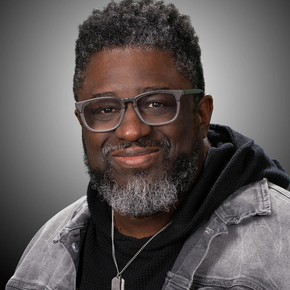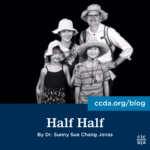An excerpt from Lamar Hardwick’s book, How Ableism Fuels Racism.
In 1974, Larry and Sandi Zobrest gave birth to their first child, Jim, while living in Erie, Pennsylvania. Jim was diagnosed as profoundly deaf after a routine medical examination before his first birthday. Jim would later attend a private preschool for children with disabilities; however, after learning that he would be sent to a public school system that lacked accommodations for his disability, the family moved to Tucson, Arizona, where Jim would attend the state-operated Arizona School for the Deaf and Blind. There, he received a taxpayer-funded sign language interpreter. After several years of struggling with Jim’s education, the Zobrests moved away from Tucson and returned to Erie, eventually enrolling Jim in a Roman Catholic school.
When Jim was enrolled in this private school, however, the district it was a part of denied him the use of an interpreter, citing that it would be unlawful to use state funds at a religious school. The Zobrest family sued the school district. They were under the impression that state funds could be used to provide their son with assistance at a private Catholic school. In their view, denying their son the assistance he needed was due to their religious choices. While the federal government allows for religious liberty, using federal funds to support their child at a private religious institution seemed to violate the law that prohibits the federal government from preferring one religion over another. The case introduced a tension between religion and disability rights in American discourse.
The contest over who would pay for Jim’s interpreter went on for six years, five of which were in court. During that time, Jim graduated from high school. Eventually, the focus on disability rights took a back seat to the focus on religious freedom in education. This happened because both parties involved in the lawsuit decided to frame the case in terms of religious freedom rather than disability law. The Zobrest family eventually received a favorable decision from the US Supreme Court. There was renewed hope that the landmark case would provide relief for the disabled. But in reality, in order for the Zobrests to win, religious liberty had to take precedence over disability rights. This is partly why, in 1990, upon the passing of the ADA, religious institutions could exempt themselves from the requirements of the ADA on the grounds of religious liberty.
The bigger issue, one that often goes unnoticed, is that with the use of religious liberty as a means of exempting themselves from providing federally mandated accommodations for disabled people, religious institutions also effectively distanced themselves from practicing a faith that demands involvement in social justice. If you have ever wondered why there is so much tension in the modern church involving social justice, it is because as soon as the church was able to use religious liberty to opt out of creating a more just world for the disabled, it became easier to continue to fracture the connection between faith and justice.
The exemption of the church from the ADA based on religious liberty has had a far greater impact than just providing accommodations for disabled people; it also became the platform for many churches and congregations to distance themselves from practicing racial justice.
Content taken from How Ableism Fuels Racism by Lamar Hardwick, ©2024. Used by permission of Brazos Press.
About Lamar Hardwick

Lamar Hardwick (DMin, Liberty University) is the former lead pastor of Tri-Cities Church in Atlanta, Georgia, and the author of Disability and the Church: A Vision for Diversity and Inclusion. He is a graduate of the Yale Divinity School Clergy Scholar Program and a 2017 graduate of Georgia Forward’s Young Gamechangers program. Hardwick regularly writes and speaks on disability inclusion in the church. He has written for Huffington Post and BioLogos and is a frequent guest on radio shows and podcasts.



